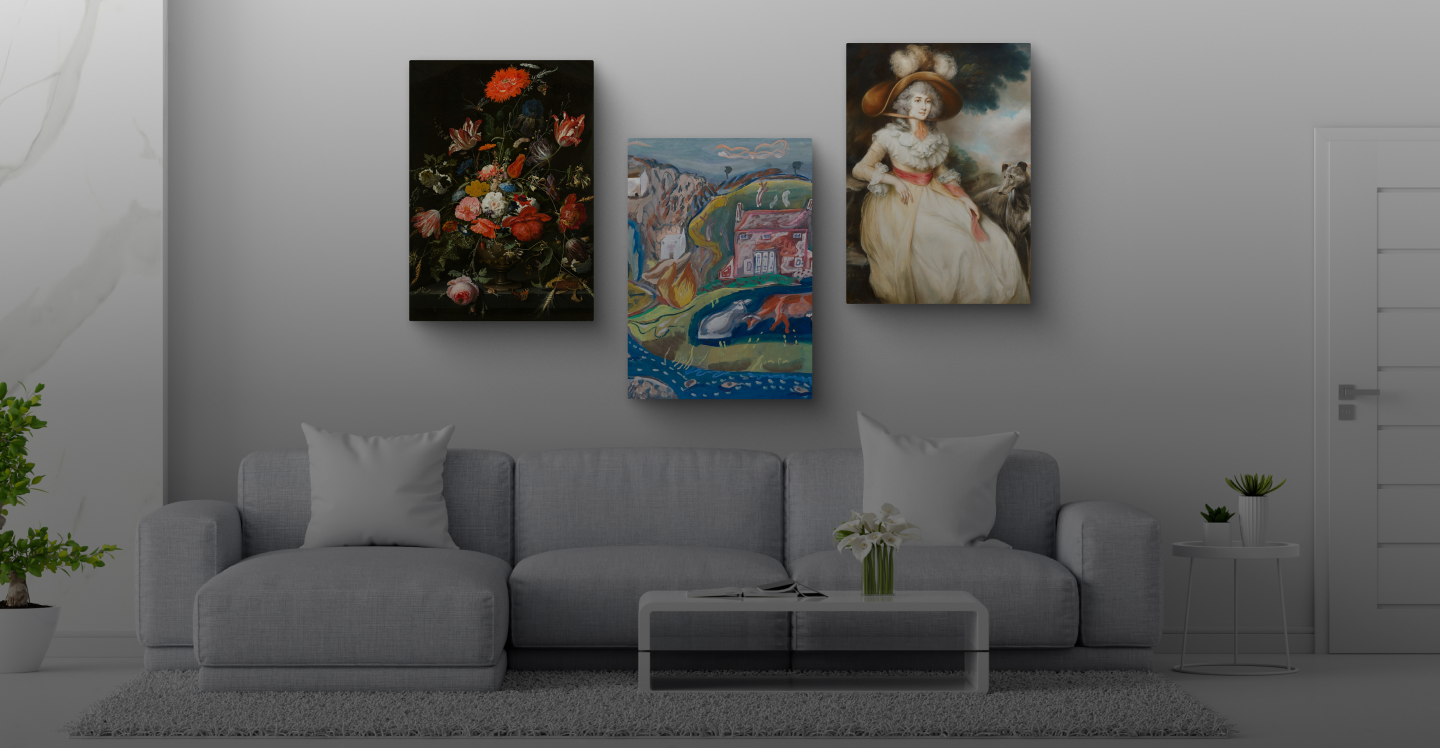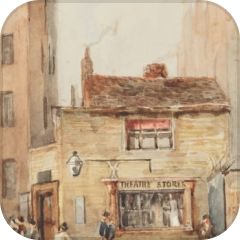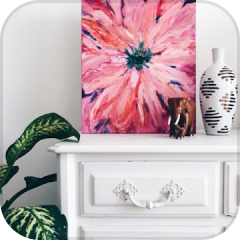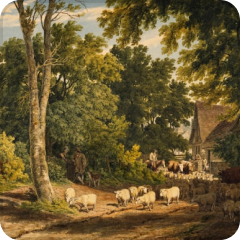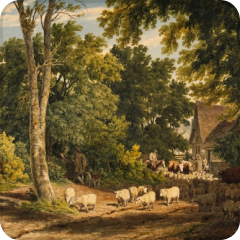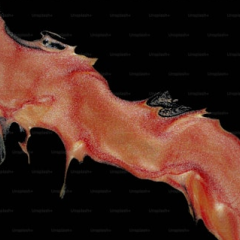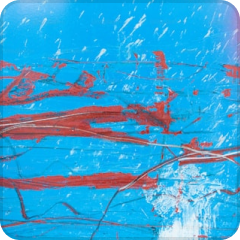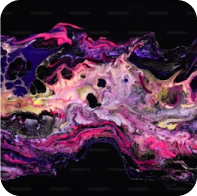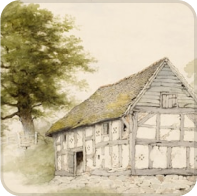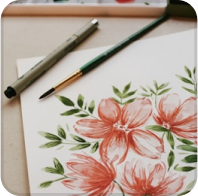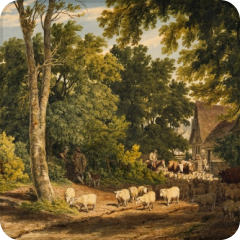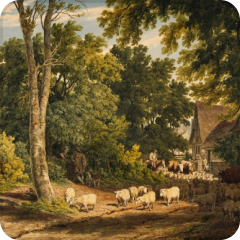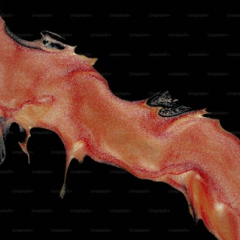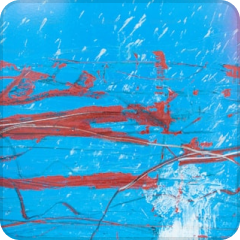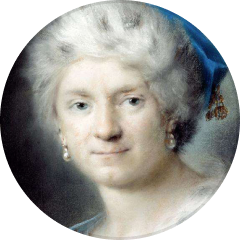





Top Categories
Transform Your Space with Personalized Art Prints
Bring your walls to life with premium, customizable canvas prints. Whether it’s your favorite memories or inspiring art, Zebaco makes it easy to create beautiful, durable pieces that reflect your style.

High-Quality Prints

Affordable Custom Art

100% Satisfaction
What’s On Sale
What Our Customers are Saying


Oliver Stone
"I recently purchased a stunning canvas from Zebaco, and I couldn't be happier with my choice! The vibrant colors and exquisite detail have truly transformed my living room. “


Amelia Rivers
"I recently purchased a stunning canvas from Zebaco, and I couldn't be happier with my choice! The vibrant colors and exquisite detail have truly transformed my living room. “


Ethan Hawke
"I recently purchased a stunning canvas from Zebaco, and I couldn't be happier with my choice! The vibrant colors and exquisite detail have truly transformed my living room. “


Sophia Bennett
"I recently purchased a stunning canvas from Zebaco, and I couldn't be happier with my choice! The vibrant colors and exquisite detail have truly transformed my living room. “


Sophia Bennett
"I recently purchased a stunning canvas from Zebaco, and I couldn't be happier with my choice! The vibrant colors and exquisite detail have truly transformed my living room. “
Transform Your Home with Captivating Wall Photos Arrangements
Creating memorable wall photos displays transforms any living space from ordinary to extraordinary. When professional family photographs arrive in your digital gallery, the real magic begins with thoughtful curation and strategic placement throughout your home. These precious moments deserve more than digital storage on computer hard drives - they belong prominently displayed where daily life unfolds.
Many families invest significantly in professional photography sessions yet struggle with translating those beautiful captures into meaningful home decor. The transition from digital files to physical displays requires careful consideration of space, sizing, arrangement patterns, and storytelling elements that create visual impact.
Wall photos serve as constant reminders of cherished memories, milestones, and relationships that define family life. Unlike temporary decorative elements, these personal galleries evolve alongside growing families, documenting precious stages of childhood, romantic partnerships, and generational connections that span decades.
The Critical Importance of Proper Sizing for Wall Photos
Selecting appropriate dimensions represents the foundational element of successful wall photos displays. Common misconceptions about print sizing often result in disappointing arrangements that appear insignificant within larger room contexts. Standard gift print dimensions like 5×7 and 8×10 inches, while perfect for albums or desktops, become virtually invisible when mounted on expansive wall surfaces.
Room proportions dictate minimum sizing requirements for wall photos to achieve visual prominence. Massive living room walls demand substantial print dimensions to avoid the "postage stamp effect" where images appear dwarfed by surrounding space. Consider the viewing distance from primary seating areas when determining optimal sizing - photographs viewed from across rooms require significantly larger dimensions than those examined up close.
Furniture placement beneath wall photos influences sizing decisions dramatically. A substantial sectional sofa or dining room buffet creates horizontal anchoring that requires proportionally sized artwork above. The general principle suggests wall photos should span approximately two-thirds of the furniture width below, creating harmonious visual balance between horizontal elements.
Ceiling height affects perceived scale within rooms, making standard-sized prints appear even smaller in spaces with vaulted or cathedral ceilings. High-ceiling environments benefit from oversized wall photos or multiple large prints arranged vertically to draw the eye upward and fill vertical space appropriately.
Professional designers frequently recommend starting with larger dimensions than initially considered comfortable. Most homeowners underestimate the visual impact needed to create statement walls that truly command attention. Bold sizing choices often prove more satisfying long-term than conservative approaches that leave walls feeling incomplete.
Choosing Between Single Statement Pieces and Multi-Photo Collections
The decision between showcasing one magnificent large photograph versus curating multiple coordinated images depends on available wall space, room function, and personal aesthetic preferences. Single large wall photos create immediate focal points that dominate room design, while multi-photo arrangements offer storytelling opportunities through varied compositions.
Statement pieces work exceptionally well above mantels, headboards, or prominent dining room walls where singular focus enhances room elegance. A breathtaking 30×40 inch family portrait commands attention while maintaining sophisticated simplicity. These larger wall photos eliminate decision fatigue associated with complex arrangements while ensuring maximum visual impact.
Multi-photo displays excel in spaces where storytelling takes precedence over singular focus. Gallery walls in hallways, stairwells, or family rooms benefit from diverse image collections that document various family moments, seasons, and relationships. These arrangements invite longer viewing engagement as viewers discover new details within each photograph.
Consider room traffic patterns when choosing between single or multiple wall photos. High-traffic areas like entryways or corridors suit multi-photo arrangements that provide visual interest during brief passages. Conversely, spaces designed for relaxation benefit from calming single-image displays that promote tranquility.
The architectural features of rooms influence optimal display approaches. Rooms with interesting molding, built-in shelving, or unique window placements often accommodate single large wall photos better than busy multi-photo arrangements that compete with existing visual elements.
Crafting Compelling Visual Narratives Through Wall Photos
Exceptional wall photos displays transcend mere decoration by weaving compelling stories through carefully selected image combinations. Rather than randomly selecting favorite photographs, intentional curation creates emotional journeys that resonate with viewers and family members daily.
Narrative-driven wall photos begin with identifying the story you want to tell. Family growth, seasonal celebrations, milestone achievements, or generational connections all provide rich storytelling foundations. Consider which moments best represent your family's unique personality, values, and experiences worth celebrating permanently.
Emotional variety within wall photos collections creates engaging viewing experiences. Combine action shots capturing spontaneous laughter with tender intimate moments and formal posed portraits. This emotional range prevents displays from feeling static while ensuring each viewing reveals new appreciable details.
Compositional diversity enhances storytelling impact within wall photos arrangements. Mix close-up portraits showcasing individual personalities with wider environmental shots that establish context and location. Detail images capturing hands, feet, or meaningful objects add intimate layers to family narratives.
Seasonal representation within wall photos collections documents family evolution across time. Include images from different seasons, holidays, and annual traditions to create comprehensive family documentaries. These temporal elements help wall photos feel current and relevant rather than frozen in single moments.
Material Selection: Framed Prints Versus Canvas Options for Wall Photos
The choice between framed prints and canvas wraps significantly impacts both aesthetic appeal and practical considerations for wall photos displays. Each option offers distinct advantages depending on room design, maintenance preferences, and long-term display goals.
Canvas wraps provide contemporary, gallery-like appearances that work exceptionally well as statement wall photos. The seamless, frameless presentation creates modern sophistication while eliminating concerns about frame style coordination with existing room decor. Canvas materials offer slight texture that adds visual depth and dimension to photographs.
Maintenance simplicity makes canvas wraps attractive for busy families. Without glass surfaces or intricate frame details, canvas wall photos require only occasional dusting to maintain pristine appearance. This practical advantage particularly benefits households with young children where cleaning accessibility matters significantly.
Framed prints offer unmatched versatility for evolving wall photos displays. Standard frame sizes accommodate image updates as children grow or family composition changes. Quality matting within frames creates elegant borders that enhance photograph presentation while protecting print edges from environmental damage.
Frame material choices allow coordinated design themes throughout homes. Matching frame finishes across multiple wall photos creates cohesive visual flow between rooms while individual frame styles can complement specific room aesthetics. Wood frames suit traditional decors while metal frames enhance contemporary spaces.
Cost considerations vary between framed prints and canvas options for wall photos. While initial canvas investments may exceed framed alternatives, the elimination of separate frame purchases and potential for larger sizing can provide long-term value. Frame selections range from budget-friendly options to premium materials that significantly impact total investment.
Professional Printing Standards for Lasting Wall Photos Quality
Investing in professional-grade printing ensures wall photos maintain exceptional quality throughout years of daily viewing. Consumer-level printing services, while convenient and economical, often compromise color accuracy, paper quality, and longevity that professional labs guarantee.
Color calibration represents a crucial difference between amateur and professional printing for wall photos. Professional labs maintain precisely calibrated equipment that reproduces photographer-intended colors accurately. This attention to color fidelity ensures skin tones appear natural and environmental colors match original scene characteristics.
Paper and canvas substrate quality directly affects wall photos appearance and durability. Professional labs utilize archival-quality materials designed to resist fading, yellowing, and deterioration over decades. These premium substrates maintain color vibrancy and structural integrity far superior to consumer alternatives.
Professional finishing techniques enhance wall photos presentation significantly. Expert mounting, trimming, and quality control processes ensure prints arrive ready for immediate display without additional preparation. These finishing details contribute to overall professional appearance that elevates home decor.
Coating applications protect wall photos from environmental factors that cause gradual degradation. UV-resistant coatings prevent sun damage while moisture-resistant treatments guard against humidity effects. These protective measures prove especially valuable for wall photos displayed in rooms with significant natural light exposure.
Grid Arrangements: Systematic Approaches to Wall Photos Organization
Grid-based wall photos arrangements create striking visual order while accommodating multiple images within defined spaces. These systematic approaches work particularly well for families wanting to display numerous photographs without creating chaotic or overwhelming presentations.
Nine-image grids represent popular starting points for wall photos displays. Arranged in three rows of three photographs, these collections work beautifully above sofas, in dining rooms, or as hallway galleries. The symmetrical nature provides pleasing visual balance while offering flexibility in image selection and storytelling.
Sixteen-image grids suit larger wall spaces requiring more substantial visual impact. Four rows of four wall photos create impressive displays perfect for great rooms, master bedrooms, or formal dining areas. These expanded grids accommodate extended family portraits, seasonal documentation, and milestone celebrations within single cohesive presentations.
Uniform sizing within grid arrangements ensures professional appearance for wall photos displays. Consistent dimensions, whether 10×10, 12×12, or larger squares, create clean geometric patterns that enhance room sophistication. Square formats work particularly well for grid arrangements as they maximize space utilization while maintaining proportional harmony.
Spacing considerations between individual wall photos within grids affect overall visual impact. Generally, 2-4 inches between images provides sufficient separation without fragmenting the collection. Consistent spacing throughout the grid maintains professional appearance while ensuring individual photographs receive appropriate visual breathing room.
Color coordination within grid wall photos enhances overall cohesion. While images need not match perfectly, considering overall color palettes when selecting photographs prevents jarring contrasts that disrupt visual flow. Aim for complementary tones that work harmoniously within room color schemes.
Asymmetrical Layouts for Dynamic Wall Photos Presentations
Asymmetrical arrangements offer creative alternatives to traditional grid systems for wall photos displays. These dynamic layouts accommodate varying print sizes while creating visually interesting compositions that draw extended viewer engagement.
The classic asymmetrical approach combines one large central wall photo with several smaller supporting images. A prominent 20×24 inch family portrait anchored by four surrounding 8×10 portraits creates compelling focal hierarchies. This arrangement accommodates both group and individual photographs within single coordinated displays.
Horizontal asymmetrical layouts work exceptionally well above lengthy furniture pieces like sectional sofas or buffet tables. Three wall photos of descending sizes (16×24, 11×14, 11×14) create pleasing visual rhythm while maintaining horizontal emphasis that complements furniture lines below.
Vertical asymmetrical arrangements suit spaces with significant height requirements. Combining tall portrait-oriented wall photos with smaller landscape images creates dynamic vertical movement perfect for stairwells, narrow hallways, or spaces flanking architectural features like fireplaces.
Organic clustering approaches group wall photos in seemingly casual arrangements that actually follow careful compositional principles. These layouts accommodate various print sizes while creating conversational groupings that invite closer examination. The key lies in maintaining visual balance through strategic placement and size distribution.
Template approaches simplify asymmetrical wall photos planning by providing proven arrangement formulas. Popular templates include the "five-photo cluster" featuring one large central image surrounded by four smaller supporting photographs arranged at varying heights and positions around the focal point.
Color Harmony Strategies for Cohesive Wall Photos Displays
Color coordination within wall photos arrangements significantly impacts overall room aesthetics and visual flow. While family photographs naturally contain varied color palettes, strategic selection and arrangement create harmonious displays that enhance rather than conflict with existing interior design.
Monochromatic approaches utilize wall photos sharing similar color temperatures or tonal ranges. Selecting images with predominantly warm tones (reds, oranges, yellows) or cool tones (blues, greens, purples) creates sophisticated unity within displays. Black and white conversions offer timeless solutions that complement any room color scheme.
Complementary color schemes incorporate wall photos featuring colors that naturally harmonize within interior spaces. Consider existing room elements like furniture upholstery, wall paint colors, and decorative accessories when selecting photographs. Images that echo or complement these established colors create seamless integration.
Seasonal color coordination allows wall photos displays to reflect changing decorative themes throughout the year. Spring collections might emphasize fresh greens and soft pastels, while autumn arrangements feature rich golds, deep reds, and warm browns. This approach keeps displays feeling current and connected to natural cycles.
Neutral-dominant selections ensure wall photos remain compatible with evolving room designs. Photographs featuring primarily neutral backgrounds (whites, grays, beiges) adapt easily to changing color schemes while maintaining timeless appeal. These versatile images provide decorating flexibility as room aesthetics evolve.
Accent color strategies use wall photos to introduce desired colors into room palettes. If room design lacks sufficient blue tones, selecting family photographs featuring ocean backgrounds, blue clothing, or sky elements naturally introduces these colors. This approach makes wall photos functional design elements beyond mere decoration.
Lighting Considerations for Optimal Wall Photos Visibility
Proper illumination dramatically affects wall photos impact and longevity. Strategic lighting enhances photograph visibility while protecting valuable prints from damaging light exposure that causes fading and deterioration over time.
Natural light assessment reveals optimal wall photos placement within rooms. South-facing walls receive intense direct sunlight that rapidly degrades photograph quality, making these locations poor choices for valuable family images. North-facing walls provide gentle, consistent illumination ideal for long-term display preservation.
Artificial lighting solutions enhance wall photos visibility during evening hours while providing protection from harmful UV exposure. Picture lights mounted above individual frames create dramatic highlighting effects perfect for statement pieces. Track lighting systems offer flexible illumination for larger wall photos collections.
Glare elimination ensures wall photos remain clearly visible from multiple viewing angles. Glass-covered framed prints positioned opposite windows often create reflection problems that obscure image details. Canvas options or anti-reflective glass treatments solve these visibility challenges while maintaining protection.
UV protection measures prevent gradual color degradation in wall photos exposed to natural light. Museum-quality glass incorporates UV filtering that blocks harmful light wavelengths while maintaining crystal-clear visibility. LED lighting systems produce minimal UV emissions compared to traditional incandescent or fluorescent options.
Dimmer controls provide lighting flexibility for wall photos displays in multi-purpose rooms. Adjustable illumination allows dramatic highlighting during entertaining while offering subtle ambient lighting for daily living. This flexibility enhances both photograph appreciation and room functionality.
Measuring and Planning Wall Photos Layouts
Accurate measurement and careful planning prevent costly mistakes while ensuring wall photos arrangements achieve intended visual impact. Professional approach to layout planning saves time, money, and frustration while guaranteeing satisfying results.
Wall measurement techniques establish boundaries for wall photos displays while identifying potential obstacles like switches, outlets, or architectural features. Document exact wall dimensions including height and width measurements, noting any interrupting elements that affect arrangement possibilities.
Furniture relationship measurements determine appropriate wall photos sizing and positioning. Measure furniture width and height to calculate proportional display requirements. Standard guidelines suggest wall photos should span 60-75% of furniture width below while maintaining 6-12 inches clearance above furniture surfaces.
Paper template creation allows experimentation with wall photos arrangements before committing to final placement. Cut paper rectangles matching intended print dimensions, then tape these templates to walls for visualization. This process reveals spacing issues, proportion problems, or arrangement improvements before purchasing prints.
Room function analysis influences wall photos selection and arrangement approaches. Formal dining rooms support elegant, traditional arrangements while family rooms accommodate more casual, playful displays. Consider who uses each space and how they interact with wall areas when planning layouts.
Ceiling height calculations ensure wall photos arrangements complement room proportions appropriately. Standard 8-foot ceilings require different approaches than 12-foot cathedral ceilings. Higher ceilings accommodate larger prints and more extensive arrangements while maintaining proper scale relationships.
Seasonal Rotation Strategies for Dynamic Wall Photos Collections
Implementing seasonal rotation systems keeps wall photos displays fresh and engaging throughout the year. This approach maximizes photograph utilization from extensive family galleries while preventing display staleness that occurs with permanent arrangements.
Storage solutions facilitate easy wall photos rotation without damaging prints during transitions. Archival storage boxes protect photographs from dust, moisture, and light exposure between display periods. Organized labeling systems help locate specific images for seasonal changes or special occasions.
Quarterly rotation schedules align wall photos with natural seasonal rhythms and family celebration cycles. Spring displays might emphasize outdoor adventures and Easter celebrations, while winter arrangements showcase holiday traditions and cozy indoor moments. This timing creates anticipation for seasonal display changes.
Themed rotation approaches organize wall photos around specific family activities, locations, or relationship focuses. Summer vacation displays, grandparent visit collections, or sports season highlights create focused narratives that celebrate particular aspects of family life throughout rotating cycles.
Frame system designs accommodate rotation without requiring complete reinstallation. Magnetic frame systems, clip-based displays, or standardized frame sizes allow quick image swapping while maintaining consistent arrangement structures. These systems encourage frequent updates that keep displays feeling current.
Special occasion features create opportunities for temporary wall photos modifications. Birthday months, graduation seasons, or anniversary celebrations warrant special display attention that can supplement regular seasonal rotations. These focused celebrations make family members feel specially honored during significant personal milestones.
Creating Focal Points Through Strategic Wall Photos Placement
Establishing clear focal points within wall photos arrangements guides viewer attention while creating visual hierarchy that enhances room design. Strategic placement ensures certain photographs receive prominence while supporting images complement rather than compete for attention.
Central positioning techniques place most important wall photos in mathematically centered locations within arrangements. The human eye naturally gravitates toward center positions, making these ideal for favorite family portraits or milestone documentation. Surrounding supporting images enhance central focuses without overwhelming primary subjects.
Size variation creates natural focal points within wall photos collections. Significantly larger prints automatically draw attention, making them perfect for showcasing most beloved family images. Smaller supporting photographs provide context and additional narrative elements without diluting main focal impact.
Color contrast utilization makes specific wall photos stand out within collections. Images featuring vibrant colors naturally attract attention when surrounded by more subdued photographs. This strategy works particularly well for highlighting special celebrations or significant family milestones within broader collections.
Isolation techniques separate focal wall photos from supporting elements through strategic spacing or arrangement patterns. Increased white space around featured photographs creates visual breathing room that emphasizes importance while preventing overwhelming busy appearances.
Lighting emphasis enhances focal points within wall photos displays through targeted illumination. Individual picture lights or strategically positioned track lighting can highlight specific photographs while maintaining general ambient lighting for surrounding images. This layered lighting approach creates dramatic focal emphasis.
Height and Positioning Guidelines for Wall Photos Installations
Proper hanging height ensures wall photos achieve optimal viewing comfort while maintaining professional appearance standards. Industry guidelines provide starting points, but individual room characteristics and furniture relationships require customized approaches for each installation.
Standard gallery height positions wall photos with centers at 57-60 inches from floor level. This measurement accommodates average adult eye levels while ensuring comfortable viewing for most family members. However, room-specific factors may warrant adjustments to these general guidelines.
Furniture relationships significantly influence appropriate wall photos height positioning. Images hanging above seating areas should clear furniture by 6-12 inches minimum to prevent head contact while maintaining visual connection. Higher clearances suit tall-backed furniture or rooms with unusually high ceilings.
Stairwell installations require graduated height adjustments for wall photos that follow ascending or descending angles. Rather than maintaining uniform height measurements, align photographs with stair angles while ensuring consistent spacing relationships between images. This approach creates flowing visual movement that complements architectural lines.
Multiple viewer accommodation considers height preferences for different family members. Compromise positions work well for mixed adult and child households, though children's areas might warrant lower positioning that encourages young viewer engagement with family photographs.
Room scale influences appropriate wall photos positioning beyond standard height guidelines. Rooms with dramatically high ceilings benefit from slightly elevated positioning that draws attention upward, while rooms with lower ceilings might require positioning closer to standard furniture-relationship guidelines.
Mixing Orientations: Portrait and Landscape Wall Photos Integration
Successful wall photos displays often incorporate both portrait and landscape oriented images that create dynamic visual rhythm while accommodating diverse photographic compositions. This mixing approach prevents monotonous appearances while maximizing storytelling potential within family collections.
Proportional balance prevents any single orientation from overwhelming wall photos arrangements. Generally, aim for roughly equal representation between portrait and landscape images, though slight variations create more interesting asymmetrical compositions than perfectly balanced distributions.
Transitional placement strategies position mixed-orientation wall photos to create smooth visual flow between different image shapes. Alternating patterns or strategic clustering prevents abrupt orientation changes that might appear jarring or disconnected within overall arrangements.
Scale relationships ensure portrait and landscape wall photos work harmoniously despite dimensional differences. Similar total square footage between different orientations maintains visual weight balance even when actual dimensions vary significantly between rectangular and vertical rectangular formats.
Central anchor approaches use one orientation as the primary focus while incorporating opposite orientation as supporting elements. A large landscape family portrait might anchor an arrangement with smaller portrait individual photographs providing supporting narrative elements around the featured image.
Visual breathing room becomes particularly important when mixing orientations within wall photos displays. Adequate spacing between different shaped images prevents cluttered appearances while allowing each photograph adequate individual appreciation space within the larger arrangement context.
Spacing and Alignment Principles for Professional Wall Photos Displays
Consistent spacing and precise alignment distinguish amateur wall photos arrangements from professional-quality displays that enhance rather than detract from room aesthetics. These foundational principles ensure arrangements appear intentional and sophisticated regardless of complexity level.
Uniform spacing measurements create visual rhythm within wall photos collections. Standard spacing of 2-4 inches between images provides sufficient separation while maintaining collection cohesion. Larger prints may warrant increased spacing, while smaller images benefit from tighter clustering that prevents fragmentation.
Alignment strategies ensure wall photos arrangements appear professionally installed rather than haphazardly placed. Horizontal alignment creates clean lines that complement architectural features while vertical alignment can emphasize room height or create interesting visual tension with horizontal furniture elements.
Edge alignment techniques provide structure for complex wall photos arrangements. Aligning outer edges of multiple images creates invisible organizational frameworks that guide viewer attention while maintaining visual order. These structural alignments work particularly well for asymmetrical arrangements that might otherwise appear chaotic.
Baseline considerations ensure wall photos maintain consistent relationships with room elements like chair rails, window sills, or ceiling lines. Aligning arrangement baselines with architectural features creates sophisticated integration that makes displays appear custom-designed for specific spaces.
Mathematical approaches simplify complex wall photos spacing calculations. Grid systems, golden ratio applications, or simple fractional divisions provide reliable frameworks for achieving pleasing proportional relationships between images and surrounding space elements.
Incorporating Environmental Context in Wall Photos Selections
Environmental elements within family photographs add depth and context to wall photos displays while connecting indoor arrangements with outdoor memories and experiences. These contextual elements help images transcend simple portraiture by documenting complete family lifestyle narratives.
Location significance enhances wall photos emotional resonance when displayed in homes. Images captured at meaningful family destinations, annual vacation spots, or significant local landmarks create conversation starters while documenting family history and travel experiences that might otherwise fade from memory.
Seasonal environment documentation within wall photos provides natural rotation opportunities and temporal storytelling elements. Spring blossoms, summer beaches, autumn foliage, and winter snow create beautiful backdrop variations that keep family displays feeling connected to natural cycles and annual rhythms.
Architectural background elements in wall photos can complement home interior design themes. Images featuring interesting building details, bridge structures, or urban landscapes add sophisticated visual elements that appeal to design-conscious viewers while maintaining family focus.
Natural setting integration connects indoor wall photos displays with outdoor lifestyle elements. Beach scenes, forest backgrounds, or mountain vistas bring nature indoors while documenting family connections to outdoor activities and environmental appreciation that defines lifestyle values.
Weather documentation adds authentic environmental context to wall photos that captures genuine family moments. Rain-soaked adventures, snow play sessions, or perfect sunshine celebrations document real family experiences rather than idealized posed portraits, creating more authentic and engaging displays.
Maintenance and Preservation of Wall Photos Collections
Long-term preservation ensures wall photos maintain exceptional quality and appearance throughout years of home display. Proper maintenance routines protect valuable family photographs while extending display life significantly beyond casual care approaches.
Dusting schedules prevent accumulation that dulls wall photos appearance over time. Weekly gentle dusting with microfiber cloths maintains optimal visibility while preventing particle buildup that can permanently embed in canvas textures or frame crevices. Consistent maintenance proves easier than intensive periodic cleaning.
Environmental monitoring protects wall photos from gradual damage caused by humidity fluctuations, temperature extremes, or excessive light exposure. Room humidifiers or dehumidifiers maintain optimal moisture levels while UV-filtering window treatments protect against sun damage during peak daylight hours.
Frame inspection routines identify potential problems before they cause permanent wall photos damage. Checking for loose mounting hardware, glass cracks, or backing deterioration prevents accidents while ensuring displays remain securely installed. Annual inspections provide adequate monitoring frequency for most home installations.
Cleaning product selection affects wall photos longevity significantly. Avoid harsh chemicals, abrasive cleaners, or excessive moisture that can damage prints, frames, or canvas materials. Manufacturer-recommended cleaning approaches ensure appropriate care without risking valuable family photographs.
Rotation benefits extend beyond aesthetic variety to include preservation advantages for wall photos collections. Periodic display changes reduce cumulative light exposure for individual photographs while allowing entire collections to be enjoyed throughout rotating cycles. This approach maximizes collection utilization while minimizing individual image degradation.
Budget-Conscious Approaches to Wall Photos Projects
Creating stunning wall photos displays need not require substantial financial investment when approached strategically. Careful planning, phased implementation, and creative resource utilization can achieve impressive results within modest budget constraints.
Phased implementation allows gradual wall photos collection building over time rather than requiring immediate complete arrangements. Start with one or two key pieces, then add supporting images during subsequent months or seasons. This approach spreads costs while allowing experimentation with arrangements before committing to complete collections.
Size prioritization focuses budget resources on maximum visual impact pieces. One large statement wall photo often provides more dramatic impact than multiple smaller prints costing equivalent amounts. Consider concentrating resources on fewer, larger pieces rather than numerous small images.
DIY framing solutions reduce wall photos costs significantly while providing customization opportunities. Quality frames from discount retailers, combined with professional matting services, often cost substantially less than complete professional framing while maintaining attractive appearance standards.
Bulk printing discounts reward larger orders for wall photos projects. Many professional labs offer progressive pricing that reduces per-unit costs for larger quantities. Planning complete room arrangements allows bulk ordering that maximizes these volume savings.
Alternative material exploration identifies cost-effective options for wall photos that maintain quality appearance. Canvas boards, metal prints, or acrylic mounting provide contemporary alternatives to traditional framing while often costing less than conventional approaches. These materials also eliminate ongoing frame maintenance requirements.
Room-Specific Wall Photos Strategies and Considerations
Different rooms within homes present unique opportunities and challenges for wall photos displays. Understanding room-specific requirements ensures arrangements complement intended functions while maximizing visual impact within diverse residential environments.
Living room wall photos require substantial visual presence to compete with large furniture pieces and high traffic levels. These primary family gathering spaces benefit from bold arrangements that create conversation focal points while withstanding frequent viewing without becoming tiresome or overwhelming.
Master bedroom wall photos create intimate viewing environments perfect for romantic couple portraits or peaceful family moments. These private spaces accommodate more personal image selections while benefiting from larger sizing that provides visual impact from bed viewing positions. Softer color palettes complement bedroom tranquility.
Kitchen wall photos must withstand moisture, temperature fluctuations, and frequent cleaning requirements. Canvas options often perform better than framed glass alternatives in these environments, while placement away from cooking areas prevents grease accumulation and heat damage. Consider casual family moments that complement kitchen gathering functions.
Hallway wall photos create gallery experiences that transform transitional spaces into meaningful family showcases. Narrow spaces accommodate linear arrangements that guide movement while providing viewing entertainment during passage. Consistent spacing and alignment become particularly important in these confined viewing environments.
Children's room wall photos encourage personal connection while allowing growth-appropriate updates. Lower hanging heights accommodate young viewers while frame styles and subject matter should reflect age-appropriate interests. Plan for easy image rotation as children develop changing preferences and milestone achievements.
Advanced Arrangement Patterns for Wall Photos Mastery
Sophisticated arrangement patterns elevate wall photos displays beyond basic grid or linear approaches through complex compositional relationships that create museum-quality presentations within residential environments.
Golden ratio applications provide mathematically pleasing proportional relationships for wall photos arrangements. This classical proportion system creates naturally harmonious spacing and sizing relationships that appear instinctively correct to viewers. Calculate golden ratio dimensions by multiplying smaller measurements by 1.618 for larger proportional elements.
Triangular composition principles organize wall photos into implied triangular relationships that create dynamic visual movement. Three-point triangles using varying sized images as vertices establish strong compositional foundations, while additional supporting photographs can reinforce or complement triangular structures.
Radial arrangements organize wall photos around central focal points with supporting images radiating outward in circular or spiral patterns. These organic layouts work particularly well for large wall spaces requiring comprehensive coverage while maintaining clear organizational logic.
Layered depth approaches create three-dimensional visual effects within wall photos displays through overlapping placement strategies. Slight overlapping of frame edges or varied projection distances from wall surfaces add architectural dimension that transforms flat displays into sculptural installations.
Progressive sizing sequences arrange wall photos in graduated size progressions that create flowing visual movement. Images transitioning from large to small (or vice versa) guide viewer attention through arranged narratives while maintaining mathematical precision that prevents chaotic appearances.
Color Psychology Applications in Wall Photos Design
Understanding color psychology enhances wall photos' emotional impact while creating desired atmospheric effects within different home environments. Strategic color selection and arrangement influence room moods and family emotional responses to displayed photographs.
Warm color emphasis in wall photos creates welcoming, energetic atmospheres perfect for social spaces like living rooms or family rooms. Images featuring reds, oranges, and yellows naturally encourage gathering and conversation while promoting feelings of comfort and familial connection within shared spaces.
Cool color palettes in wall photos promote tranquility and relaxation, making them ideal for bedrooms, reading areas, or meditation spaces. Blues, greens, and purples create calming visual environments that support rest and contemplation while maintaining sophisticated aesthetic appeal.
Neutral dominance provides versatile wall photos foundations that adapt to changing room aesthetics over time. Images featuring primarily whites, grays, and beiges integrate seamlessly with evolving interior design while maintaining timeless appeal that transcends decorating trends.
Contrasting accent strategies use wall photos to introduce desired color elements into room palettes. If spaces lack sufficient warmth, selecting family images featuring sunset backgrounds, autumn foliage, or golden hour lighting naturally introduces these warming influences through meaningful family content.
Monochromatic sophistication creates elegant wall photos displays through single-color family themes. Sepia tones, black and white conversions, or blue-tinted processing create sophisticated unity within arrangements while emphasizing composition and emotional content over color variety.
Understanding the Core Challenges in Wall Photo Displays
Displaying wall photos successfully requires more than simply hanging frames wherever empty space appears. Thoughtful planning and precise execution ensure that photographs elevate a room’s ambiance instead of detracting from it. When arrangements go wrong, the results are immediately noticeable—visual imbalance, awkward proportions, and diminished emotional impact. By identifying common mistakes early, homeowners, designers, and curators can craft presentations that feel harmonious, refined, and intentional.
Large or small photo displays interact directly with interior architecture, furniture positioning, and lighting conditions. Every decision—print size, layout configuration, mounting height, and illumination—affects how viewers experience the imagery. Without a methodical approach, even beautiful photographs can appear insignificant or disruptive. Mastering the fundamentals of scale, spacing, and quality alignment prevents these missteps while fostering environments where every image commands attention and respect.
Preventing Proportion Miscalculations in Photo Displays
Improper sizing is the most prevalent issue in wall photo arrangements. A photograph that appears dwarfed on an expansive wall loses visual authority, while an oversized print placed in a confined space overwhelms its surroundings. Proportion must be considered in both horizontal and vertical dimensions, as well as relative to furniture, architectural lines, and viewing distances.
Accurate measurement is essential before printing or framing. Using masking tape outlines or digital visualization tools helps preview how different sizes will interact with the wall. Designers often recommend that artwork occupy approximately two-thirds of the width of nearby furniture pieces, such as sofas or console tables, to maintain balanced relationships. For gallery-style clusters, collective dimensions should read as one unified composition rather than disconnected fragments. By applying these proportion guidelines, displays feel cohesive and intentionally scaled, reinforcing the room’s architectural rhythm.
Avoiding Cluttered and Overcrowded Arrangements
Overcrowding diminishes the beauty of wall photos by depriving each piece of individual presence. When frames are packed tightly with no breathing room, the eye cannot rest on a single image, and the display becomes chaotic rather than captivating. This problem is especially common when attempting to fill large walls using numerous small photographs without considering spacing ratios.
Maintaining generous negative space around each frame highlights its distinct character and prevents visual fatigue. Consistent gaps between images—whether two inches, four inches, or more—create orderly rhythm and alignment. Larger prints naturally demand wider spacing to maintain impact, while symmetrical grids or aligned rows reinforce organizational clarity. When well-executed, spacious arrangements appear deliberate and elegant, allowing viewers to engage deeply with every photograph.
Ensuring Consistency in Print and Frame Quality
Mixing prints from varied sources or using frames of uneven craftsmanship introduces distracting inconsistencies that weaken the overall aesthetic. High-resolution professional prints displayed alongside low-quality consumer-grade photos reveal disparities in sharpness, color saturation, and material finish. Similarly, mismatched frame materials or glazing types create jarring visual interruptions.
Maintaining uniform production standards ensures cohesion. Using the same paper type, color profile, or printing method across all photographs produces harmonious results. Frames should share consistent styles, tones, or finishes—even when using varied shapes and sizes—to prevent the arrangement from appearing haphazard. When quality is uniform, the display feels curated and intentional, transforming disparate images into a single, powerful visual statement.
Correcting Poor Lighting for Enhanced Photo Visibility
Even perfectly proportioned and beautifully printed wall photos suffer if they are poorly illuminated. Dim environments obscure detail and diminish color vibrancy, while harsh, uncontrolled light sources create glare, hotspots, or uneven shadows. Photographs deserve dedicated lighting solutions that enhance their visual clarity and protect them from long-term light damage.
Supplementary lighting—whether track-mounted fixtures, adjustable wall sconces, or recessed directional lights—ensures even illumination across entire surfaces. Modern LED technology provides high color rendering and minimal heat generation, preserving prints while making details pop. Careful angling eliminates reflections, particularly on glossy glazing. Investing in proper illumination transforms photographs from overlooked décor into luminous focal points that enrich daily living spaces.
Achieving Correct Mounting Height and Comfortable Viewing
Hanging photos too high forces viewers to strain their necks, while overly low placement disrupts sight lines and spatial flow. Artwork should align with natural eye level for comfortable viewing, typically around 57 to 60 inches from floor center. However, this guideline must adapt to furniture placement and room scale.
Testing arrangements with temporary mounting methods or removable hooks allows for adjustments before committing to permanent installation. Grouped photo displays should have a collective center aligned to eye level rather than individual frames placed independently. This approach creates a unified presentation that feels intentional, balanced, and easy to appreciate without physical discomfort.
Integrated Strategies for Flawless Wall Photo Presentations
Achieving exceptional wall photo displays requires addressing every variable simultaneously: proportion, spacing, quality, lighting, and positioning. By approaching arrangements holistically, homeowners and designers avoid the piecemeal mistakes that undermine aesthetic success. The result is a visually cohesive composition where every photograph contributes to an elegant narrative rather than competing for attention.
Implementing these strategies transforms ordinary photo displays into professional-grade interior features. Whether creating a single dramatic statement piece or assembling a complex gallery wall, consistent planning and attention to detail ensure that images are experienced at their full emotional and artistic power. With careful execution, wall photos become timeless enhancements to interior environments, adding personal expression while maintaining architectural harmony.
Enhancing Special Celebrations Through Personalized Wall Photo Displays
Temporary or rotating wall photo displays transform ordinary living spaces into personalized storytelling environments for memorable events. By curating photographs that honor relationships, milestones, and achievements, families can create immersive visual narratives that bring warmth and meaning to celebrations. These displays act as both décor and conversation pieces, offering guests an intimate look at the lives and accomplishments being honored. Unlike static artwork, special occasion photo arrangements are dynamic, adaptable, and capable of reflecting the evolving spirit of family life.
Creating these displays requires careful planning to ensure that the layout, proportion, and flow of imagery complement the event’s atmosphere. Thoughtful arrangements highlight the featured individual or occasion while harmonizing with the surrounding interior. Temporary mounting methods allow for easy assembly and removal without damaging walls, making these displays practical for both frequent and rare celebrations. With the right approach, wall photo presentations can become a signature element of family gatherings, reinforcing bonds and enhancing emotional connections among loved ones.
Birthday Celebration Walls That Chronicle Life Stories
Milestone birthdays provide an ideal opportunity to honor a loved one with a curated wall photo display tracing their personal journey from infancy through adulthood. By selecting photographs that illustrate personality, achievements, friendships, and favorite moments, these displays create a biographical timeline that both entertains and inspires guests. Large prints or mixed-sized arrangements emphasize key chapters of a person’s life, while captions or decorative accents add context and personality.
These birthday walls work particularly well in social spaces where guests naturally gather, such as living rooms, dining areas, or entryways. Using chronological sequencing, viewers can walk through the individual’s life stage by stage, sparking stories, laughter, and heartfelt memories. Flexible display systems such as removable hooks, adhesive strips, or freestanding panels make installation quick and reversible. By combining vibrant prints with cohesive frames or matting, families can produce professional-quality presentations that look celebratory without feeling cluttered.
Anniversary Displays That Celebrate Relationship Milestones
Wedding anniversaries and relationship milestones are perfect occasions to feature wall photos documenting a couple’s shared journey. From early dating snapshots to wedding portraits and family-building memories, these displays highlight the evolution of love and partnership. The visual narrative reminds couples and guests alike of the moments, challenges, and triumphs that have shaped their relationship.
These romantic displays suit intimate areas such as master bedrooms, cozy dining spaces, or dedicated event venues. Creative arrangements might incorporate handwritten notes, wedding vows, or keepsakes alongside photographs for added depth. Using consistent printing and framing styles unifies the display, while thoughtful lighting enhances warmth and intimacy. Anniversary walls not only honor the past but also strengthen appreciation for the present, reaffirming commitment and shared history in a visually compelling way.
Graduation Celebration Walls That Inspire Achievement
Graduation marks years of dedication and effort, making it an ideal event for wall photo displays that celebrate academic journeys. These presentations can chronicle a graduate’s progression from early school years through higher education, culminating in their significant accomplishment. Highlighting moments such as first-day-of-school portraits, extracurricular activities, and cap-and-gown images reinforces a theme of growth, perseverance, and family support.
Placed in prominent gathering areas such as living rooms, event halls, or school auditoriums, graduation displays inspire pride and encourage continued learning. Arranging photographs in linear sequences or clustered milestone sections creates a clear visual path showing how the graduate has developed over time. Enhanced with decorative banners, school colors, or achievement certificates, these displays combine celebration with motivation, honoring the graduate while acknowledging the collective effort behind their success.
Holiday-Themed Wall Photo Presentations That Preserve Traditions
Seasonal holidays provide rich opportunities to create rotating wall photo displays that reflect cultural heritage, family rituals, and festive spirit. Christmas walls might showcase images of gift openings, tree decorations, and joyful gatherings, while Easter arrangements capture egg hunts and springtime traditions. Halloween displays featuring costume galleries add whimsical charm, while New Year celebrations highlight family milestones from the previous year.
By changing wall photo arrangements seasonally, families create living décor that evolves with each holiday. These displays evoke nostalgia, reminding viewers of cherished traditions while reinforcing cultural values. Using removable mounting techniques and consistent framing keeps seasonal rotations simple and efficient. Enhanced with garlands, themed accents, or subtle lighting, holiday photo walls blend seamlessly into event décor while providing meaningful focal points for conversation and memory sharing.
Emotional Significance of Homecoming Wall Photo Displays
Welcoming home a loved one after a prolonged absence represents one of the most heartfelt moments families can experience. Whether it is the return of a military service member, a student coming back from years at university, or a family traveler completing an extended journey, these moments are enriched by thoughtful visual tributes. Wall photo displays celebrating homecomings go beyond decoration. They serve as emotional storytelling tools that convey affection, appreciation, and shared history.
Such displays encapsulate cherished memories while symbolizing the resilience of family bonds during periods of separation. By arranging photographs that showcase both past experiences and recent milestones, hosts create an atmosphere filled with gratitude and excitement. When guests walk into a room and immediately encounter images reflecting love, adventure, and togetherness, the entire celebration becomes more personal and meaningful. These commemorative arrangements provide returning loved ones with an unmistakable sense of belonging and welcome, turning any household space into a gallery of affection.
Designing Personalized Welcome Displays with Precision
The process of creating a homecoming wall display requires far more than casually hanging pictures. Careful planning ensures that each photograph is positioned intentionally, with balanced proportions and visual harmony. Selecting high-resolution images guarantees clarity, while cohesive framing styles unify the presentation. Using a combination of candid snapshots, travel photos, and meaningful moments enriches the visual narrative, making it authentic rather than staged.
When arranging such displays, consider scale and proportion in relation to the surrounding wall space. Large central portraits or collages provide an emotional focal point, while smaller prints layered around them highlight supporting memories. This structured approach prevents displays from feeling cluttered while ensuring that every photograph contributes to the overall theme of reunion. Families often integrate welcome messages, hand-written notes, or personalized banners to add warmth and individuality without overpowering the images themselves.
Strategic Placement for Maximum Visual Impact
Positioning homecoming photo displays in high-traffic gathering spaces such as entryways, living rooms, or central halls ensures they receive the attention they deserve. These locations create an immediate impression the moment a returning family member steps through the door. Guests naturally gravitate toward these displays, fostering conversations, storytelling, and joyful reflection.
Temporary mounting methods such as removable hooks, adhesive strips, or freestanding easels enable quick installation without damaging walls. Adjustable hanging systems also make it possible to reconfigure displays if necessary, allowing for flexibility when hosting events with varying layouts. Using soft, even lighting helps to illuminate details while preventing glare that can obscure photographs. Strategic lighting placement enhances both color accuracy and overall visibility, ensuring every image retains its full emotional resonance.
Incorporating Themes and Decorative Accents
Homecoming wall displays become even more meaningful when paired with thematic elements that reflect the returning individual’s experiences. For a military service member, the display might include travel maps, insignias, or subtle patriotic colors. For a college graduate coming home, academic highlights, campus photographs, and achievement documentation can be added. Travelers returning from extended journeys may appreciate souvenirs or destination-inspired accents incorporated alongside their photographs.
These embellishments complement rather than overshadow the imagery. They add context, highlighting specific chapters of life while maintaining focus on the individual. Consistent color palettes across frames, backgrounds, and decorative elements unify the presentation, making the display feel curated rather than improvised. This thoughtful integration transforms walls into complete storytelling installations rather than simple photo clusters.
Combining Digital Technology with Traditional Displays
Modern homecoming wall displays often blend physical prints with digital innovations to create immersive experiences. Large format printed photographs can be combined with digital frames or projection screens that rotate through hundreds of additional images. This hybrid approach preserves the tactile charm of traditional prints while offering the variety and dynamism of modern slideshow technology.
Using archival-quality printing materials ensures that physical photographs remain vibrant and durable for years, even after the event. Meanwhile, digital screens can feature videos, recorded messages, or chronological slideshows documenting the loved one’s time away. This layered storytelling approach allows families to showcase far more memories than a static display would accommodate while maintaining visual sophistication and emotional impact.
Extending the Celebration Beyond a Single Day
Although homecoming wall displays are often created for one-time events, their value can extend long after the celebration ends. Families frequently preserve these curated arrangements by transferring them into permanent photo walls, albums, or shadow boxes. By capturing the temporary display in photographs, hosts can document the tribute itself as part of the family archive.
Some families choose to maintain rotating photo galleries that evolve as milestones occur. By adapting wall displays to accommodate future achievements or additional travel adventures, households create an ever-changing visual history that honors all members over time. This evolving approach keeps the home environment vibrant and personal, celebrating not only the return of loved ones but also the ongoing story of family life.
Importance of Integrated Wall Photo Display Strategies
Creating a memorable wall photo display for any special occasion requires more than simply placing pictures on a wall. Whether celebrating birthdays, anniversaries, graduations, holidays, or homecomings, integrated strategies combine design precision with emotional storytelling. These displays function as visual narratives, guiding viewers through meaningful memories while maintaining aesthetic harmony. Properly planned arrangements establish balance, avoid clutter, and elevate home interiors to a level of curated sophistication.
High-resolution prints maintain crystal-clear quality even at close viewing distances, ensuring photographs appear vibrant and lifelike. Families who invest in consistent framing materials achieve a polished, gallery-like effect that enhances the perceived value of every image. Beyond technical considerations, these displays communicate affection, history, and achievement in a way words alone cannot capture. By applying intentional design principles, households transform ordinary walls into enduring showcases of shared experiences and treasured moments.
Planning and Proportion for Cohesive Arrangements
One of the most crucial aspects of any wall photo display is proportional planning. Selecting print dimensions that suit the scale of a wall prevents common visual mistakes, such as images appearing undersized in large rooms or overwhelming in small spaces. Measurement and careful placement ensure viewers can appreciate each photograph individually while recognizing its role within the overall composition.
Balanced spacing between frames creates breathing room, preventing the arrangement from feeling chaotic or congested. Displays arranged symmetrically provide structured elegance, while asymmetrical layouts deliver dynamic visual energy. Choosing between these approaches depends on personal style preferences and the tone of the occasion being celebrated. When combined with appropriate mounting systems, these proportional decisions create visually harmonious designs that appear deliberate rather than improvised.
Selecting High-Quality Materials for Lasting Displays
Using premium materials guarantees that special occasion wall photo displays maintain their brilliance over time. High-resolution images printed on archival-quality paper or canvas resist fading and preserve detail integrity. Frames crafted from hardwood, metal, or composite materials add durability while complementing the interior décor. Matting choices, such as acid-free backing boards, prevent discoloration and protect photographs from environmental damage.
Removable mounting systems provide flexibility without damaging walls, making it easy to reposition or update displays for future events. Magnetic panels, adhesive hooks, or modular hanging rails offer practical solutions for temporary installations. Incorporating protective coatings on printed images, such as UV-resistant laminates, safeguards against sunlight exposure and color degradation. When families select superior materials, they create displays that not only honor special occasions but also withstand years of enjoyment.
Enhancing Emotional Resonance Through Thematic Storytelling
The strongest wall photo displays do not simply showcase images; they craft visual stories. Thoughtful arrangements follow chronological sequences, depict personal milestones, or group photographs around shared themes. A birthday gallery might highlight life stages from childhood to the present, while an anniversary display could chronicle a couple’s journey through years of marriage. Graduation tributes often capture educational achievements alongside candid moments of growth and perseverance.
Thematic storytelling turns static photographs into dynamic experiences. Viewers are drawn from one image to the next, uncovering connections and revisiting cherished memories. Including small written captions or decorative accents reinforces these narratives without overshadowing the photographs themselves. By prioritizing storytelling, families ensure their wall displays communicate more than just visual beauty—they express love, gratitude, and pride in an unforgettable way.
Lighting and Placement to Maximize Visual Impact
Illumination plays an essential role in ensuring photographs are fully appreciated. Even, diffused lighting prevents glare while highlighting image details. Adjustable wall-mounted spotlights or soft track lighting allow homeowners to control brightness, emphasizing central portraits or feature pieces. Avoiding harsh shadows protects the integrity of prints and enhances the warm, inviting atmosphere these displays are meant to convey.
Strategic placement further elevates visual impact. Entryways, living rooms, and dining areas often provide ideal backdrops for high-visibility installations. Hanging photographs at eye level improves accessibility and prevents neck strain for viewers. Testing positions with temporary arrangements before final mounting allows adjustments for height and alignment. This careful attention to placement transforms wall photo displays into engaging focal points rather than overlooked decorations.
Blending Traditional Prints with Digital Elements
Modern technologies enable families to merge physical and digital mediums into cohesive wall photo displays. Traditional framed prints provide tactile, timeless charm, while digital screens or projection panels allow the inclusion of additional content, such as videos, slideshows, or recent travel images. This hybrid approach accommodates a broader range of memories without overcrowding the wall.
By using wireless digital frames, households can rotate content effortlessly, adding new photographs over time. Combining these elements with large-format printed portraits results in a multidimensional experience that feels both contemporary and personal. This integration of technology ensures that special occasion displays remain flexible, interactive, and capable of evolving alongside family milestones.
Creating Enduring Displays That Preserve Memories
While occasion-specific wall photo displays are often created as temporary tributes, many households choose to preserve their arrangements long-term. After an event concludes, photographs can be transferred into permanent installations or custom-designed albums. Capturing images of the display itself documents the thoughtful effort invested in honoring loved ones.
Some families maintain rotating wall galleries that adapt to different celebrations, ensuring their interiors remain dynamic and ever-relevant. Others frame these tributes permanently, turning temporary décor into timeless heirlooms. By emphasizing craftsmanship, cohesive design, and material quality, these integrated strategies create wall displays that stand as lasting reminders of family love, personal achievement, and shared history.
Final Thoughts
A home is more than just walls, windows, and furniture—it is a reflection of who you are and what you cherish. When thoughtfully chosen and artfully arranged, wall photos can turn a blank surface into a living gallery, transforming your house into a place that feels deeply personal, welcoming, and alive. The right arrangement does more than decorate a space; it tells a story, evokes emotion, and creates a sense of connection between your home and everyone who walks through the door.
One of the most powerful things about wall photos is their versatility. Whether you prefer bold, oversized prints that command attention or a collection of small, intimate frames that reward closer inspection, there is no single “correct” way to display them. The key is to think about balance, rhythm, and intention. A symmetrical layout can feel structured and serene, while an asymmetrical gallery wall adds energy and spontaneity. Mixing frame styles and photo sizes creates visual interest, while sticking to a consistent color palette or theme ties everything together with elegance.
The beauty of photo arrangements is that they are deeply personal yet endlessly adaptable. Your display can celebrate milestones—weddings, travels, graduations—or simply capture fleeting moments of everyday life. Black-and-white portraits can lend sophistication, while vibrant prints inject warmth and personality. If you’re someone who loves variety, you can even rotate your photos seasonally to keep the atmosphere fresh and dynamic. Unlike permanent renovations or expensive furniture, photo arrangements are flexible, affordable, and easily updated to reflect the changes in your life.
Practical considerations also play an important role. Choosing the right wall space, ensuring proper lighting, and selecting frames that complement rather than overpower your photos all help elevate the overall effect. Even a simple hallway or staircase can be transformed into a gallery-like corridor with a carefully planned arrangement. And with modern hanging systems, you no longer need to worry about leaving unsightly holes in your walls every time you want to try a new layout.
But perhaps the most rewarding aspect of arranging wall photos is the emotional impact. These images are not just decorative—they are touchstones of memory. They remind you of where you’ve been, who you love, and what you value. When displayed thoughtfully, they invite conversation, spark nostalgia, and give guests a glimpse into the soul of your home. Instead of filling your walls with generic artwork, you surround yourself with stories that are uniquely yours.
In the end, transforming your home with captivating wall photo arrangements is about more than aesthetics. It’s about creating a space that feels alive with meaning, warmth, and identity. It’s about turning blank walls into visual narratives that inspire you every day. Whether you opt for a sleek, modern grid or a sprawling, eclectic collage, the power lies in your hands—and your memories. With a little creativity and attention to detail, you can turn any wall into a masterpiece that truly feels like home.



